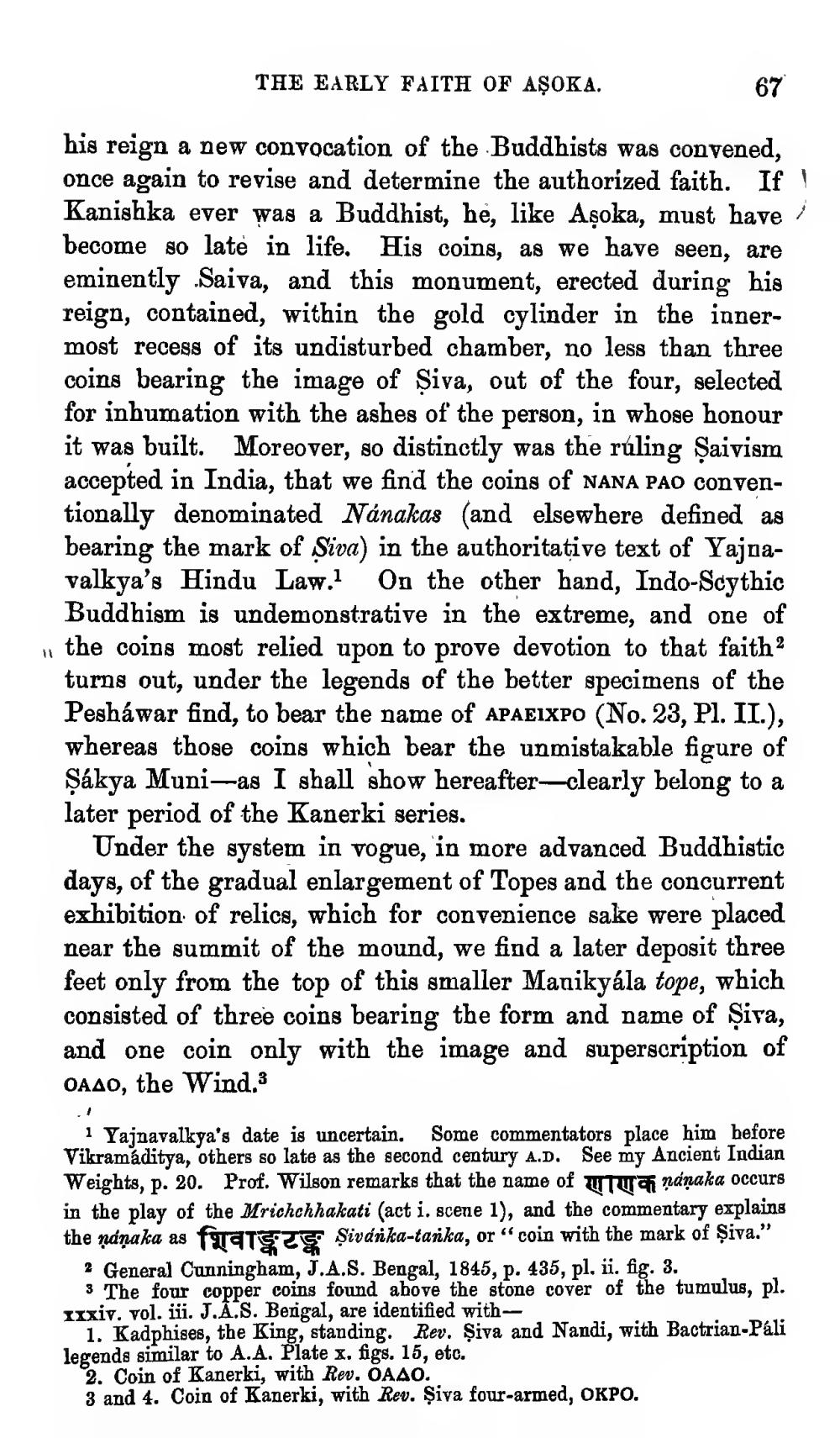________________
THE EARLY FAITH OF AŞOKA.
67
his reign a new convocation of the Buddhists was convened, once again to revise and determine the authorized faith. If Kanishka ever was a Buddhist, hè, like Aşoka, must have become so late in life. His coins, as we have seen, are eminently Saiva, and this monument, erected during his reign, contained, within the gold cylinder in the innermost recess of its undisturbed chamber, no less than three coins bearing the image of Șiva, out of the four, selected for inhumation with the ashes of the person, in whose honour it was built. Moreover, so distinctly was the ruling Şaivism accepted in India, that we find the coins of NANA PAO conventionally denominated Nánakas (and elsewhere defined as bearing the mark of Siva) in the authoritative text of Yajnavalkya's Hindu Law. On the other hand, Indo-Scythic Buddhism is undemonstrative in the extreme, and one of the coins most relied upon to prove devotion to that faith? turns out, under the legends of the better specimens of the Peshawar find, to bear the name of APAEIXPO (No. 23, Pl. II.), whereas those coins which bear the unmistakable figure of Şákya Muni-as I shall show hereafter-clearly belong to a later period of the Kanerki series.
Under the system in vogue, in more advanced Buddhistic days, of the gradual enlargement of Topes and the concurrent exhibition of relics, which for convenience sake were placed near the summit of the mound, we find a later deposit three feet only from the top of this smaller Manikykla tope, which consisted of three coins bearing the form and name of Şiva, and one coin only with the image and superscription of OAO, the Wind.
1 Yajnavalkya's date is uncertain. Some commentators place him before Vikramaditya, others so late as the second century A.D. See my Ancient Indian Weights, p. 20. Prof. Wilson remarks that the name of u ran nánaka occurs in the play of the Mrichchhakati (act i. scene 1), and the commentary explains the náņaka as françaç Şivanka-tarka, or “coin with the mark of Şiva."
2 General Cunningham, J.A.S. Bengal, 1845, p. 435, pl, ii. fig. 3.
3 The four copper coins found above the stone cover of the tumulus, pl. Ixxiv. vol. iii. J.A.S. Berigal, are identified with--
1. Kadphises, the King, standing. Rev. Siva and Nandi, with Bactrian-Pali legends similar to A.A. Plate x, figs. 15, etc.
2. Coin of Kanerki, with Rev. OAAO. 3 and 4. Coin of Kanerki, with Rev. Şiva four-armed, OKPO.




